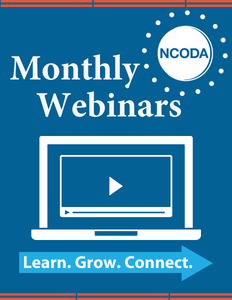Written by: Andrew Ruplin, PharmD, Seattle Cancer Care Alliance
Download Here
The purpose of this PQI is to understand the management techniques and interventions when utilizing enfortumab vedotin.
Background
Enfortumab vedotin is a nectin-4 targeting antibody conjugated to the microtubule inhibitor monomethyl auristatin E (MMAE).1 Enfortumab vedotin is approved by the FDA for the treatment of advanced or metastatic urothelial carcinoma in patients who have previously received a programmed death receptor (PD-1) or programmed death receptor (PD-L1) inhibitor and a cisplatin-containing chemotherapy in the neoadjuvant/adjuvant, locally advanced, or metastatic setting.1 More recently, the FDA expanded that approval to include patients who are cisplatin-ineligible and have received at least one prior line of systemic treatment.1 In cohort 1 of the pivotal open-label phase II trial EV-201, patients were heavily pretreated and all had prior cisplatin treatment (50% received ≥3 prior treatments), and the objective response rate was 44%, including 12% complete responses.2 Adverse effects were common, and 54% of patients had a grade ≥ 3 treatment-related adverse event, but these adverse events were manageable and no single grade ≥ 3 adverse event occurred in more than 10% of patients.2 Treatment-related adverse effects led to dose reduction in 32% of patients and discontinuation in 12% of patients.2 Cohort 2 of EV-201, published later, demonstrated the benefit of enfortumab vedotin specifically in patients who had not received cisplatin prior, with 52% of patients achieving an objective response and 20% with complete response.3 The phase III EV-301 trial confirmed the benefit of enfortumab vedotin compared to chemotherapy after treatment with cisplatin followed by immunotherapy (median overall survival, 12.88 vs. 8.97 months; hazard ratio for death, 0.70; 95% confidence interval, 0.56 to 0.89; P=0.001 with comparable incidence of treatment-emergent adverse events (93.9% in the enfortumab vedotin group and 91.8% in the chemotherapy group).4
PQI Process: Upon order of enfortumab vedotin administration
- Confirm appropriateness of enfortumab vedotin utilizing the EMR
- Review adverse events and interventions suggested as needed (see Supplemental Information: Table 1)
- Review dose specific adjustments as required (see Supplemental Information: Table 2)
- Drug interaction considerations1
- Enfortumab vedotin is metabolized via CYP3A4, and concomitant use of an antibody-drug conjugate containing MMAE and strong CYP3A4 inhibitors should be considered. Dose adjustment is typically not required
Patient Centered Activities:
- Advise patients that skin toxicities for enfortumab vedotin are likely to manifest as dry skin, pruritus, and/or maculopapular rash1
- Severe skin toxicities (10% incidence) included symmetrical drug-related intertriginous and flexural exanthema (SDRIFE), bullous dermatitis, exfoliative dermatitis, and palmar-plantar erythrodysesthesia1
- Boxed warning for Stevens-Johnson Syndrome and Toxic Epidermal Necrolysis in first cycle
- Advise patients to self-monitor for peripheral sensory neuropathy and motor neuropathy. Sensory neuropathy (44%) was more common than motor (14%)1,2
- Patient Assistance: NCODA Financial Assistance Tool
Supplemental Information:
Table 1: Selected Adverse Events and Suggested Interventions
| Event | Severity/Incidence | Suggested Intervention | Comments | |
| Skin Reactions | 54% (any grade)1 | Fragrance-free moisturizers/ointments
Topical steroids and antihistamines as indicated Systemic steroids as indicated |
Median time of onset for severe skin reactions was 0.8 months (range 0.2 – 5.3)1
Patients in EV-301 with grade 3 rash did not require treatment interruption if symptoms were manageable4 |
|
| Hyperglycemia |
|
Blood glucose test prior to infusion – a basic metabolic panel suffices
Does not need to be fasting |
BMI and elevated A1c correlated to a higher incidence of grade 3/4 hyperglycemia1
Patients with baseline A1c ≥ 8% were excluded from EV-2012 Patients with baseline A1c ≥ 6.5% should be referred to an appropriate provider for glucose management1 |
|
| Ocular Toxicity | Ocular disorders including blurred vision – 46%1
Dry eye symptoms – 36%1
|
Consider prophylactic artificial tears1
Consider topical ophthalmic steroids after ophthalmic exams1 |
Median time to onset for ocular disorders was 1.9 months (range 0.3 – 6.2)1 | |
| Neuropathy | 49% (any grade).1
Peripheral sensory neuropathy was the most common reason for dose reduction |
Recommend dose reduction as initial strategy
Consider use of gabapentin or duloxetine |
The median time to onset of grade ≥ 2 was 3.8 months (range: 0.6 – 9.2)
At the last follow-up in EV-201, 19% had complete resolution and 26% had partial improvement. 76% had resolution or ongoing grade 1 neuropathy2 |
|
| Diarrhea | 42% (any grade)1 | Recommend anti-diarrheal medications for patient as required | Grade 4 diarrhea that resolves to grade ≤2 within 72 hours with supportive management does not require treatment interruption4 |
Table 2: Dose Adjustments for Adverse Events1
| Administration |
|
||
| Starting dose | 1.25 mg/kg up to 125 mg* | ||
| First dose reduction | 1 mg/kg up to 100 mg* | ||
| Second dose reduction | 0.75 mg/kg up to 75 mg* | ||
| Third dose reduction | 0.5 mg/kg up to 50 mg* | ||
| Renal/hepatic dysfunction considerations | No dose adjustment is required for renal dysfunction
No current studies in moderate to severe hepatic dysfunction – consider avoiding use Mild hepatic dysfunction does not require an upfront dose reduction |
||
| Adverse Event | Grade/Severity | Dose Modification | |
| Hyperglycemia | Blood glucose
> 250 mg/dL |
Withhold until ≤ 250 mg/dL, then resume at same dose level | |
| Peripheral neuropathy | 2 | Withhold until grade ≤ 1, then resume at same dose level. If recurrence, withhold until Grade ≤ 1, then resume and reduce one dose level | |
| ≥ 3 | Permanently discontinue | ||
| Skin reactions | 3 | Withhold until grade ≤ 1, then resume at same dose level or consider reducing by one dose level | |
| 4 or recurrent 3 | Permanently discontinue | ||
| Other non-hematologic toxicities | 3 | Withhold until grade ≤ 1, then resume at same dose level or consider reducing by one dose level | |
| 4 | Permanently discontinue | ||
| Hematologic toxicity | 3 or Grade 2 thrombocytopenia | Withhold until grade ≤ 1, then resume at same dose level or consider reducing by one dose level | |
| 4 | Withhold until grade ≤ 1, then resume and reduce one dose level or discontinue treatment | ||
*Based on actual body weight. Dose is capped for patients ≥100 kg
References:
- Padcev® (enfortumab vedotin- ejfv) [Prescribing Information]. Bothell, WA: Seattle Genetics, Inc.; March 2021.
- Rosenberg JE, O’donnell PH, Balar AV, et al. Pivotal Trial of Enfortumab Vedotin in Urothelial Carcinoma After Platinum and Anti-Programmed Death 1/Programmed Death Ligand 1 Therapy. J Clin Oncol. 2019;37(29):2592-2600.
- Balar AV, McGregor BA, Rosenberg JE, et al. EV-201 Cohort 2: Enfortumab vedotin in cisplatin-ineligible patients with locally advanced or metastatic urothelial cancer who received prior PD-1/PD-L1 inhibitors. JCO. 2021;39(6_suppl):394-394.
- Powles T, Rosenberg JE, Sonpavde GP, et al. Enfortumab Vedotin in Previously Treated Advanced Urothelial Carcinoma. N Engl J Med. 2021;384(12):1125-1135.



